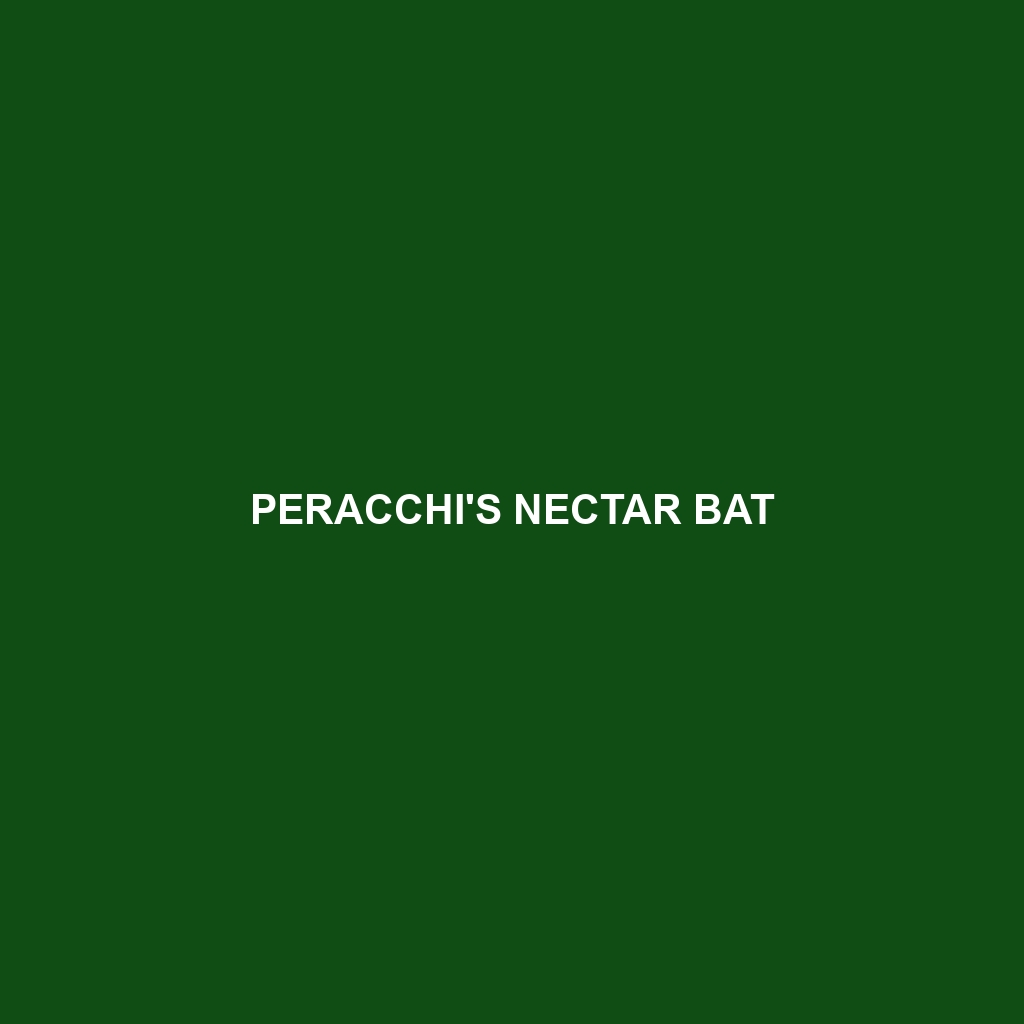Species Description: Eastern Cordilleran Nectar Bat
Common Name: Eastern Cordilleran Nectar Bat
Scientific Name:
Habitat
The Eastern Cordilleran Nectar Bat is primarily found in the mountainous regions of the Eastern Cordillera, which extends through parts of Colombia and Venezuela. This species thrives in tropical and subtropical environments, often residing in dense cloud forests, montane regions, and areas with abundant flowering plants, which are essential for their feeding habits.
Physical Characteristics
The Eastern Cordilleran Nectar Bat is a small-sized bat, typically measuring around 8 to 10 centimeters in length. It possesses a soft, velvety fur that varies in color from light brown to dark gray. One of its most distinctive features is its long, narrow snout, adapted for reaching deep into flowers to access nectar. Additionally, it features elongated tongue that can extend beyond its snout, making it an efficient pollinator in its habitat.
Behavior
This species is primarily nocturnal and exhibits unique behaviors such as hovering flight while feeding on nectar, similar to that of hummingbirds. Eastern Cordilleran Nectar Bats are known for their social structure, often roosting in small groups within tree hollows or caves. They engage in vocal communication using high-frequency sounds to locate each other and coordinate feeding.
Diet
The diet of the Eastern Cordilleran Nectar Bat predominantly consists of nectar from various flowering plants, along with fruits and pollen. They have specialized adaptations that allow them to feed efficiently on tubular flowers, which are rich in nectar. This feeding behavior not only sustains their energy but also makes them crucial players in the pollination of many plant species in their ecosystem.
Reproduction
Eastern Cordilleran Nectar Bats typically breed once a year, with peak breeding seasons occurring during the rainy season, which allows for optimal food availability. Female bats give birth to one or two pups after a gestation period of approximately 2 to 3 months. The mothers exhibit strong parental care, nursing their young until they are capable of foraging on their own.
Conservation Status
Currently, the Eastern Cordilleran Nectar Bat is classified as **vulnerable** due to habitat loss from deforestation, agricultural expansion, and climate change. Conservation efforts are essential to protect their habitats and ensure the survival of this unique bat species.
Interesting Facts
– The Eastern Cordilleran Nectar Bat has a fascinating symbiotic relationship with many plants, enhancing biodiversity through its pollination.
– They can consume more than their body weight in nectar each night, showcasing their role as effective nectar feeders.
Role in Ecosystem
The Eastern Cordilleran Nectar Bat plays a vital role in its ecosystem as a pollinator, contributing to the reproductive success of many flowering plants. Their feeding habits promote genetic diversity in plant populations. Additionally, by consuming fruits, they help disperse seeds, further aiding in forest regeneration and maintaining the ecological balance of their mountainous habitats.
